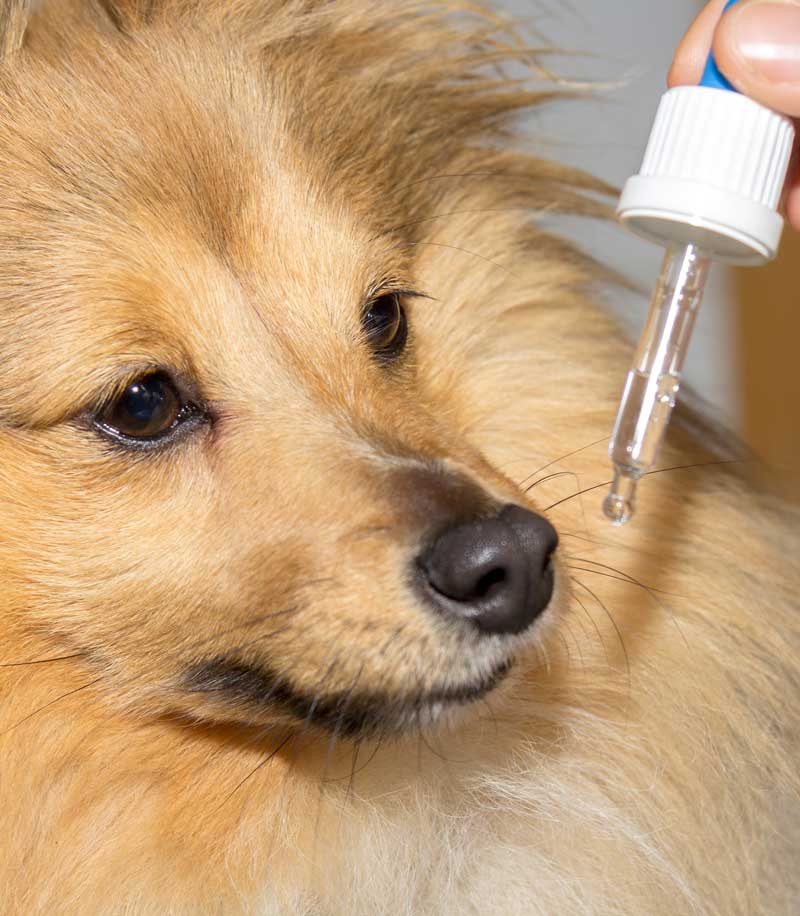Does your pup lack energy, show signs of fatigue and lethargy? The problem might be in in your dog’s blood.
Prepare yourself to be little confused. Anemia is not actually a disease that can be treated and cured. It is rather a condition that is a symptom of a disease – confused yet? Anemia refers to a reduced number of red blood cells or hemoglobin and sometimes both, circulating through your dog’s bloodstream. Red blood cells remove carbon dioxide from your dog’s body while also supplying it with oxygen. Hemoglobin is the protein inside those red blood cells that carries oxygen. These cells come from your dogs bone marrow and after circulating through the body for about three months, they break down and need to be replenished. Is this making more sense to you now?
Ailment Guides:
canine anemia
Causes of anemia in dogs?
Since Anemia is not actually a disease, but rather, a condition that is a symptom of a disease, there are a number of conditions that can cause it:
- Hypothyroidism
- Cushing’s disease
- Toxins
- Cancer
- Chronic diseases that affect or suppress red blood cell production
- Kidney disease
- Bone marrow disease
- Poor nutrition
- Trauma-related blood loss
- Immune-mediated disease
- Internal gastrointestinal bleeding
- Infectious diseases
symptoms of canine anemia:
Remember, Anemia might just be one symptom of another much bigger condition, or possibly the only symptom. The first place to look would be your dogs gums. Healthy gums will appear pink, however dogs suffering from Anemia will have gums that a very pale pink or even white in color. Fatigue is also a symptom of Anemia in dogs meaning they may become lethargic or tire easily while playing. In extreme cases, you may find dark blood in your dog’s vomit or stool. Don’t waste another second and get them to the vet if this occurs.
If you are concerned your dog has Anemia and want to know for sure, your veterinary can do some tests. There is a common blood test they can do called the packed cell volume (PCV) test. This test measures the percentage of red blood cells in the bloodstream. A dog would be considered anemic if they have a level below the 35% mark.
Why CBD can be an effective remedy for anemia in dogs
CBD – or Cannabidiol – can act in support of your dog’s cardiovascular system.
Treatment of the underlying condition may be the best place to start. After running some tests, you veterinarian may simple prescribe some medication or steroids. If the underlying condition is more severe, chemotherapy or surgery may be required.
Prevention of the Anemia depends on its severity. Simply adding a nutritional boost to their diet and supplements that are high in iron can help rebuild their red blood cell count. In severe cases a veterinarian may recommend a blood transfusion to stabilize their red blood cell count or hemoglobin.
Cannabidiol (CBD) can be very beneficial for maintaining your dog’s immune system, cardiovascular system and overall vitality. CBD helps to lessen the effects of lethargy, gastrointestinal issues and reduces anxiety, aggression and stress-related disorders.
Cannabidiol is a phytocannabinoid that has been shown to have a prominent effect on numerous ailments – including epilepsy, arthritis and cancer. Remedies containing CBD achieve this by interacting with your dog’s endocannabinoid system. Almost all animals, like people, have an endocannabinoid system; this network of neurotransmitters is integral to physiological processes like memory, mood, pain, stress and appetite.
This complex biosystem is very prevalent in dogs in comparison to other species. Canines have a high concentration of CB1 & CB2 receptors in their brainstem. CB1 receptors affect the brain, lungs, vascular system and muscles, gastrointestinal function; whereas, CB2 receptors are linked to bones, skin spleen and glial cells. In combination, CB1-CB2 collaborate in influencing the overall immune system, liver, kidneys, bone marrow, pancreas and brainstem.
CBD can help your dog by producing anti-inflammatory, anti-anxiety, antipsychotic, antispasmodic and analgesic effects indirectly – that is, CBD interacts with your dog’s ECS (Endocannabinoid System) opposite to THC which directly binds to the Cannabinoid Receptors of the body. This does two things: makes the positive remedial properties more bioavailable to your dog; and lessens or negates the psychoactive effects, such as those associated with THC ingestion.
As you can see by the scope of ailments that are affected by CBD, it is clear how introducing CBD into your dog’s routine can benefit their overall health.
Ailment Guides:
Weight Loss In Dogs
Canine Blisters
Giardia In Dogs







